This week I have a classic direct-mate problem for you. It comes from the great Soviet composer Lev Loshinsky and was published in 1947. Loshinsky's last appearance in Sunday Chess Problem was almost two years ago, so it is well past time to see another of his works. White is to move and mate in three:
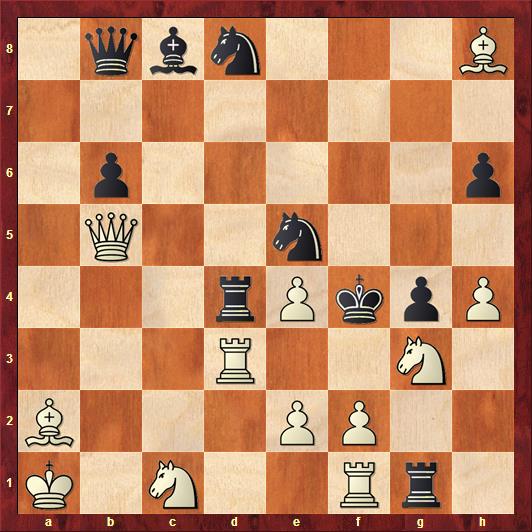
Perhaps you would like to have a go at solving this yourself. As a hint, the problem's theme is nowadays referred to as the Loshinsky magnet.
OK, here goes. The key move is 1. Qb1!.

This moves provides a masked guard of e4, which is to say that when the white rook on d3 moves away, e4 will be guarded by the white queen. In problem jargon, this sort of maneuver is referred to as an ambush.
Since e4 now has this veiled protection, white is threatening 2. Nh5+ Kxe4 3. Re3 mate.
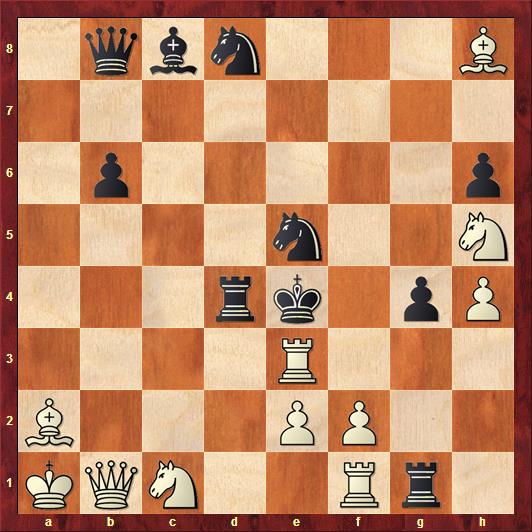
Note that white has given double check with his last move.
How is black to defend? He certainly has brutal defenses like 1. ... Rxd3 or 1. ... Nxd3, but these just fail prosaically to 2. Qxd3. I think you will find that black can no longer avoid checkmate on the next move. So let's look for other defenses.
There's nothing black can do about preventing Nh5+, so he instead looks for defenses on move three. Any move by the black rook on d4 will free up a square for the black king. That is, if white just goes through with his threat anyway, he will find that 3. Re3 is no longer checkmate, because black will be able to play 3. ... Kd4.
Let's look at the possible destinations for this rook.
We could try 1. ... Rd5. Black gains his flight square on d4, but at the cost of leaving his rook under attack from the white pawn on e4. White replies 2. Rd4:
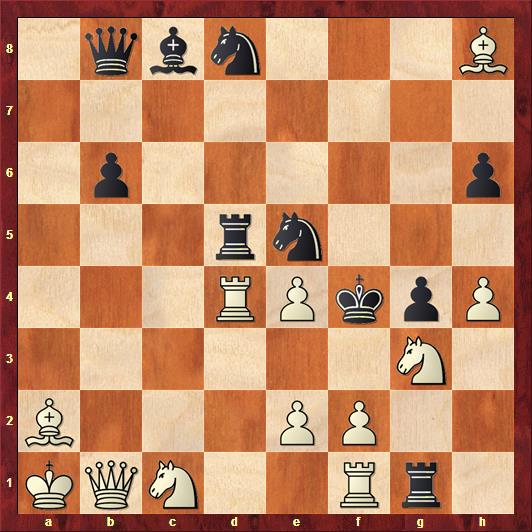
Now 3. Nh5 will be checkmate, since e4 is protected. Black could deal with this threat, but there is a second problem for him. White is also threatening 3. exd5 mate. Black has no way of defending both threats.
Do you begin to sense why the theme of this problem is referred to as Loshinsky's magnet? Black next tries 1. ... Rd6. Again black gains a flight square on d4, but this time at the cost of interfering with the black queen's control of e5. So white plays 2. Rd5.
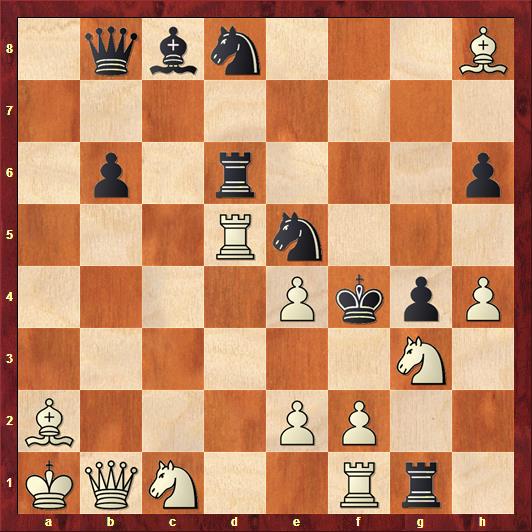
This threatens 3. Nh5 mate, again, but also creates the threat of 3. Bxe5 mate. Once more black cannot defend both threats.
By now I'm sure you'll suspect that after 1. ... Rd7 we have 2. Rd6.
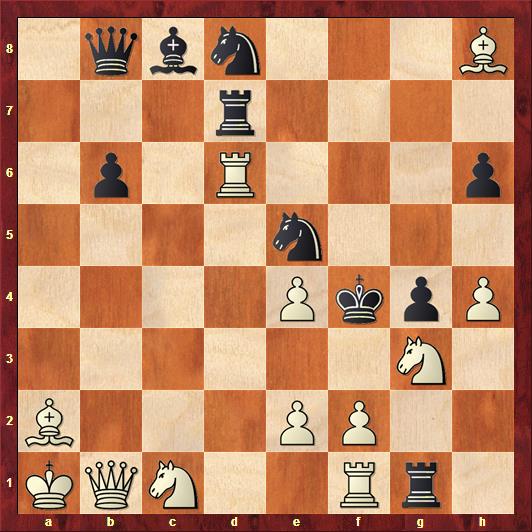
Black's defense interferes with his bishop's defense of f5. White's reply now has the double threat of 3. Nh5 mate and 3. Rf6 mate. Again, black could defend either threat alone, but not both at once.
That's all pretty good, but we're not quite finished yet. You see, black can also move his rook along the fourth rank. As before, this creates a flight square on d4 for the black king. The problem is that such moves by black weaken his control of d3. That means that after a move by the white rook, black can no longer defend against 3. Nh5 mate by playing the interference move 2. ... Nd3, since white will just reply with Nxd3 mate.
So white no longer needs to make a second threat. He does, however, need to ensure that the black rook cannot make mischief by, say, interfering with the queen by moving to c2, or by capturing the queen on b1, or by giving check by capturing the bishop on a2. You probably see where this is going.
If black tries 1. ... Rc4 white replies with 2. Rc3.
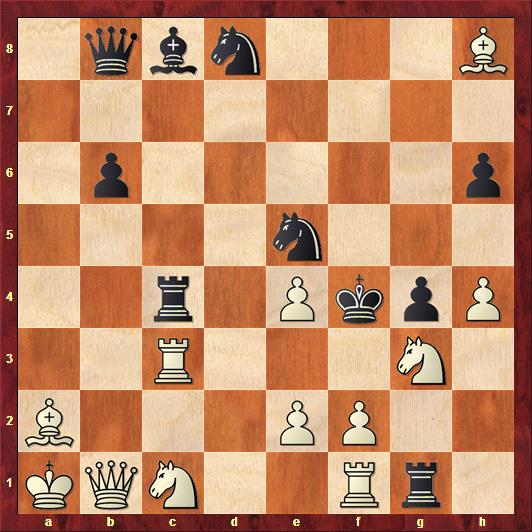
And I'm sure you will have anticipated the lines 1. ... Rb4 2. Rb3 and 1. ... Ra4 2. Ra3. Great stuff!
On the other hand, even the masterpieces can often be improved. Read this for an alternative setting of the problem, and for a discussion of the difficult artistic trade-offs problem composers are often forced to consider.
And one more piece of problem jargon for you. A problem in which multiple moves of a piece from one side are closely matched by precise moves by a piece from the other side is said to feature a duel. Problemists would say that this problem features a duel between the black rook on d4 and the white rook on d3. Thought you might want to know.
See you next week!

My first thought on this one is simple: it is the best-constructed 3-move mate problem I have ever seen. A creation of intense beauty.
I imagine Lobusov's version is considered better by contemporary composers & fans. I am in no position to judge such a thing, being in such awe of the original.
Thanks so much for this one, Jason!
It's a good one, isn't it! Lobusov and Loshinsky are both huge names in chess composition. In this case I'm really not sure which version would be considered better, for the reasons discussed in the essay I linked to.
Im new to this.
Rook to f3 check.
Black must capture.
Pawn to e3 mate.
It's not as pretty but it works, right?
Doesn't the rook move force my ending in 3 moves?
Am i missing something?
If black captures with the pawn, then g4 becomes available for the black king. When white then plays his pawn to e3 it will not be checkmate, because black will move his king to g4.